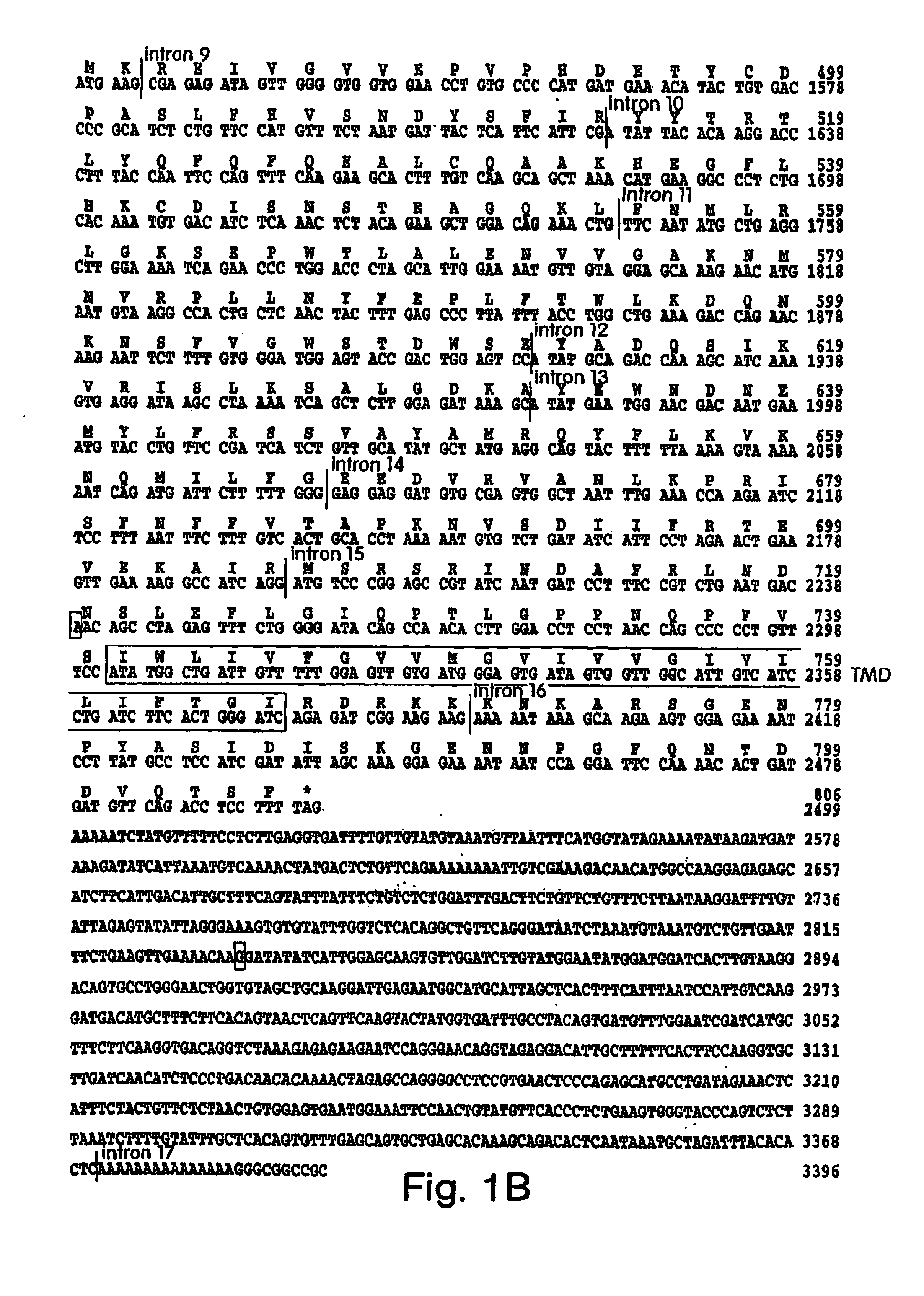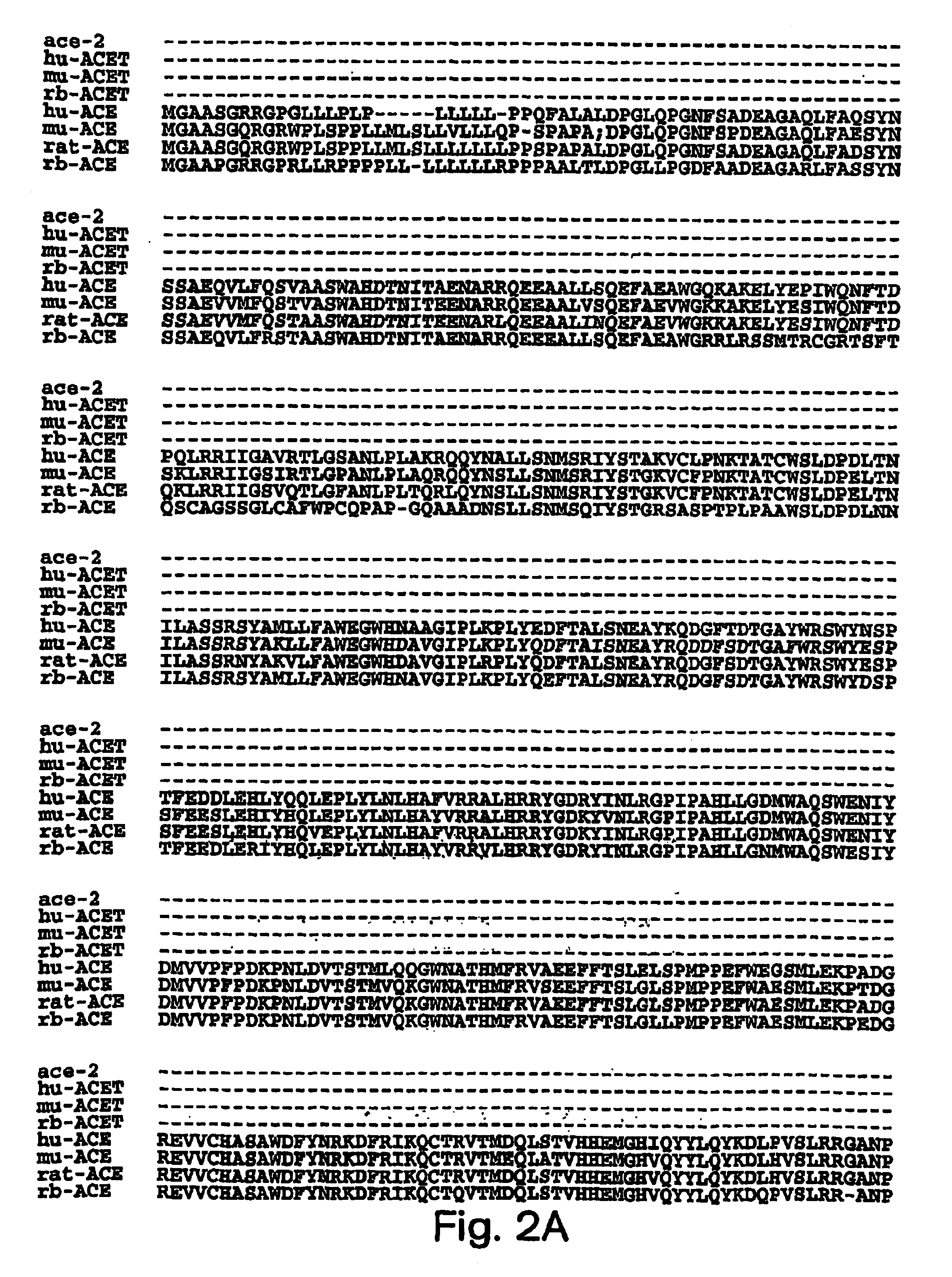Angiotensin converting enzyme homolog and uses therefor
an angiotensin converting enzyme and homolog technology, applied in the field of angiotensin converting enzyme homolog and uses therefor, can solve the problems of inability to provide sufficient cardiac output, inability to treat hypertensive patients, and increased risk of myocardial infarction, etc., to achieve the highest clinical benefit, accelerate and less costly development, and determine the appropriate dosage
- Summary
- Abstract
- Description
- Claims
- Application Information
AI Technical Summary
Benefits of technology
Problems solved by technology
Method used
Image
Examples
examples
1. Cloning and Analysis of Human ACE-2
[0348]A full length cDNA encoding human ACE-2 was isolated as follows. A cDNA library was prepared from a human heart of a subject who had congestive heart failure. Random sequencing of clones from the library identified a 1.6 kb clone that has homology to human angiotensin converting enzyme, and which is thus referred to as ACE-2.
[0349]5′ RACE was used to clone the 5′ end of the ACE-2 gene. RACE was performed using Clontech's Marathon cDNA Amplification Kit. First strand cDNA synthesis was performed using the cDNA synthesis primer supplied with the kit and 1 μg polyA+ RNA prepared from the heart of a 43 year old woman with an idiopathic cardiomyopathy using 100 u MMLV reverse transcriptase. Second strand cDNA synthesis was then performed using the second strand enzyme cocktail of the Clontech kit. The Marathon cDNA adaptor was ligated to the double stranded cDNA with T4 DNA ligase. A gene specific primer was designed starting about 400 bp downs...
PUM
| Property | Measurement | Unit |
|---|---|---|
| pH | aaaaa | aaaaa |
| Tm | aaaaa | aaaaa |
| blood pressure | aaaaa | aaaaa |
Abstract
Description
Claims
Application Information
 Login to View More
Login to View More - R&D
- Intellectual Property
- Life Sciences
- Materials
- Tech Scout
- Unparalleled Data Quality
- Higher Quality Content
- 60% Fewer Hallucinations
Browse by: Latest US Patents, China's latest patents, Technical Efficacy Thesaurus, Application Domain, Technology Topic, Popular Technical Reports.
© 2025 PatSnap. All rights reserved.Legal|Privacy policy|Modern Slavery Act Transparency Statement|Sitemap|About US| Contact US: help@patsnap.com



